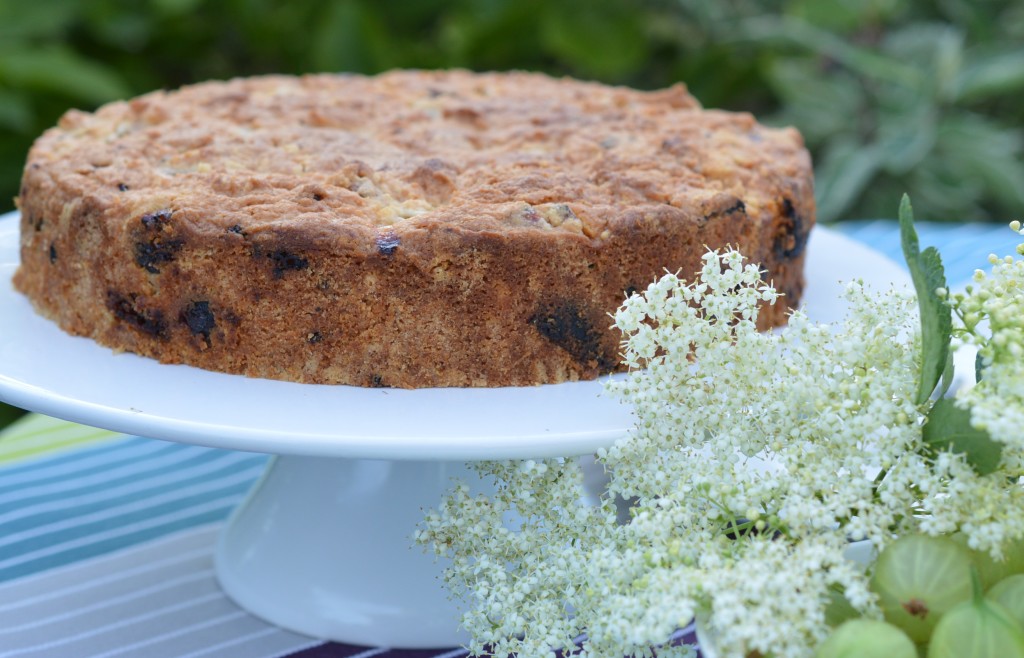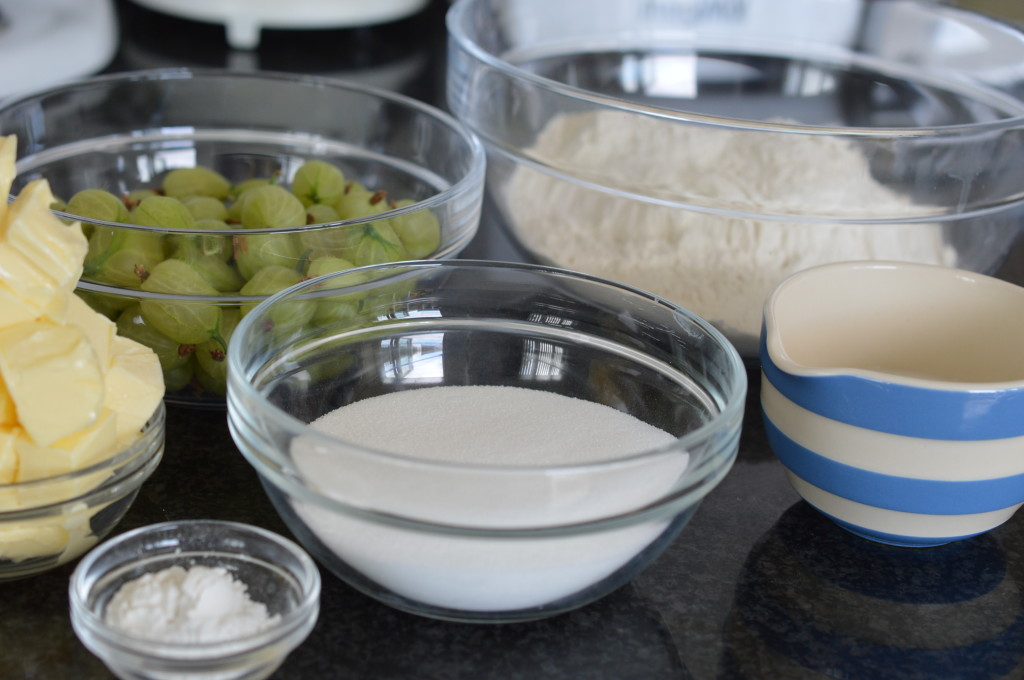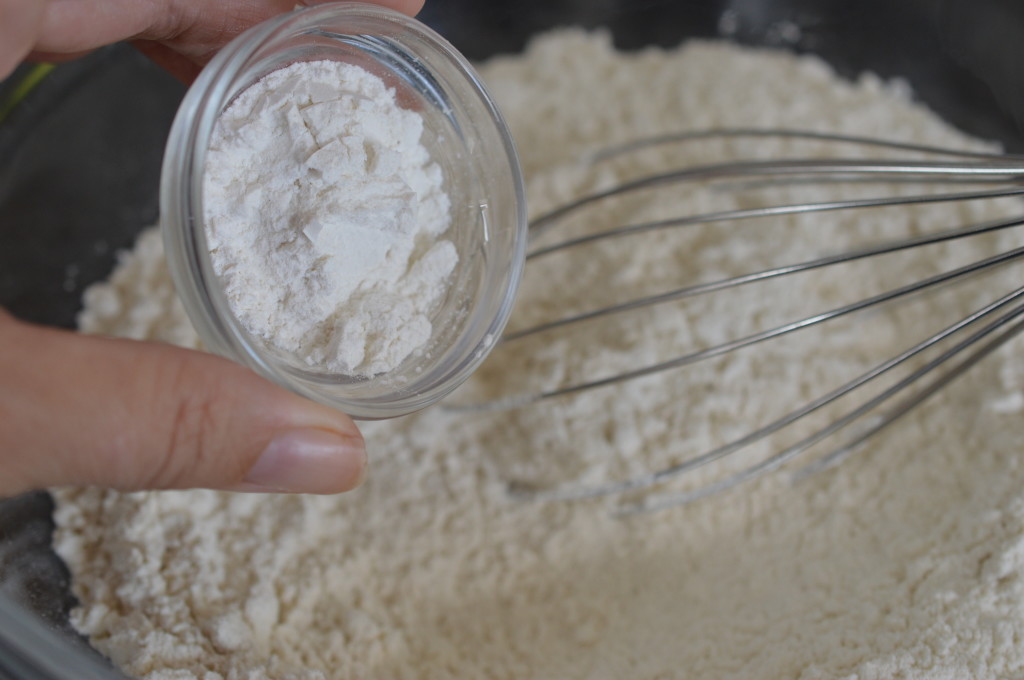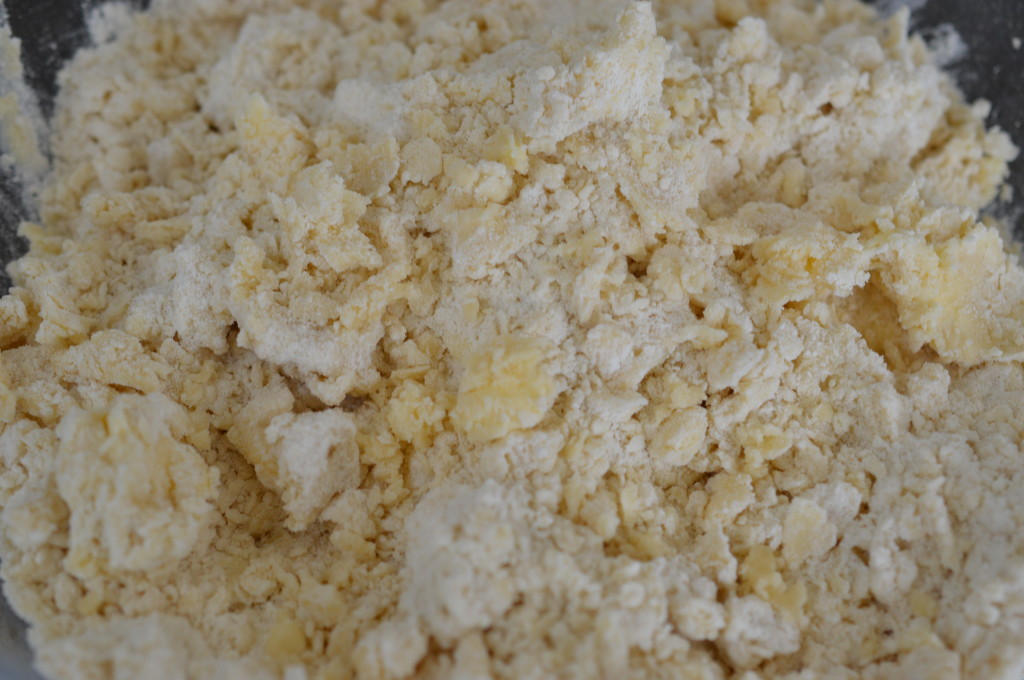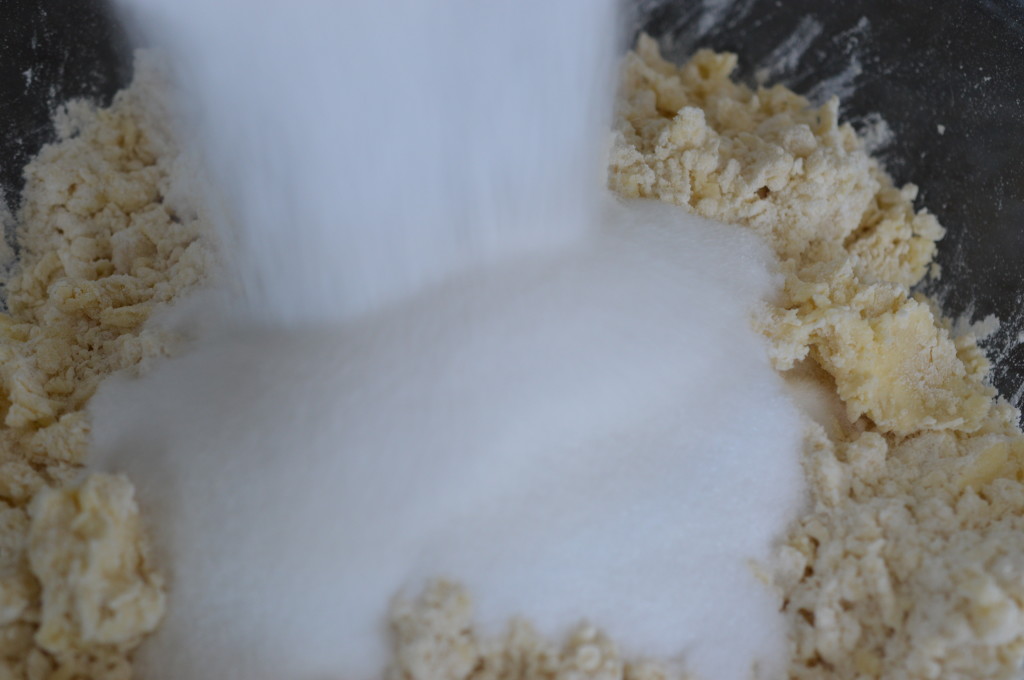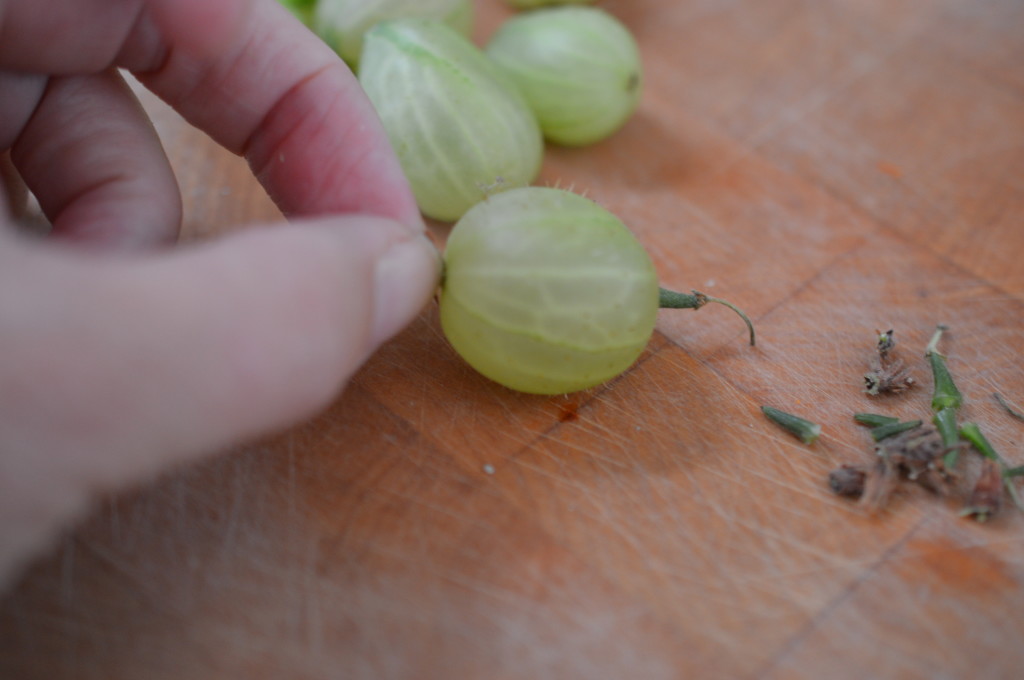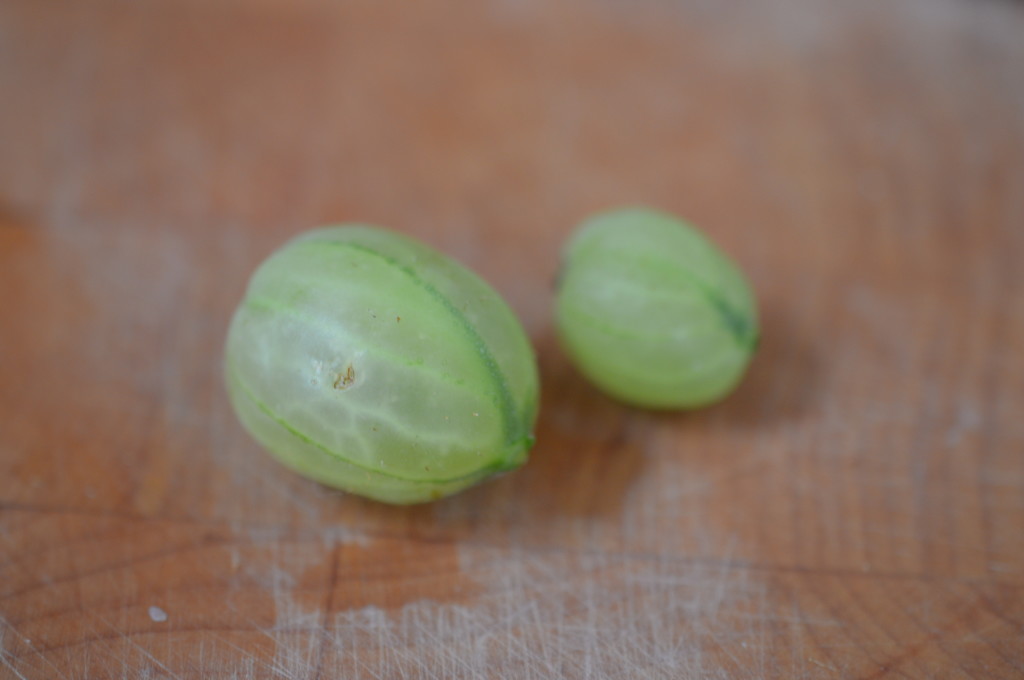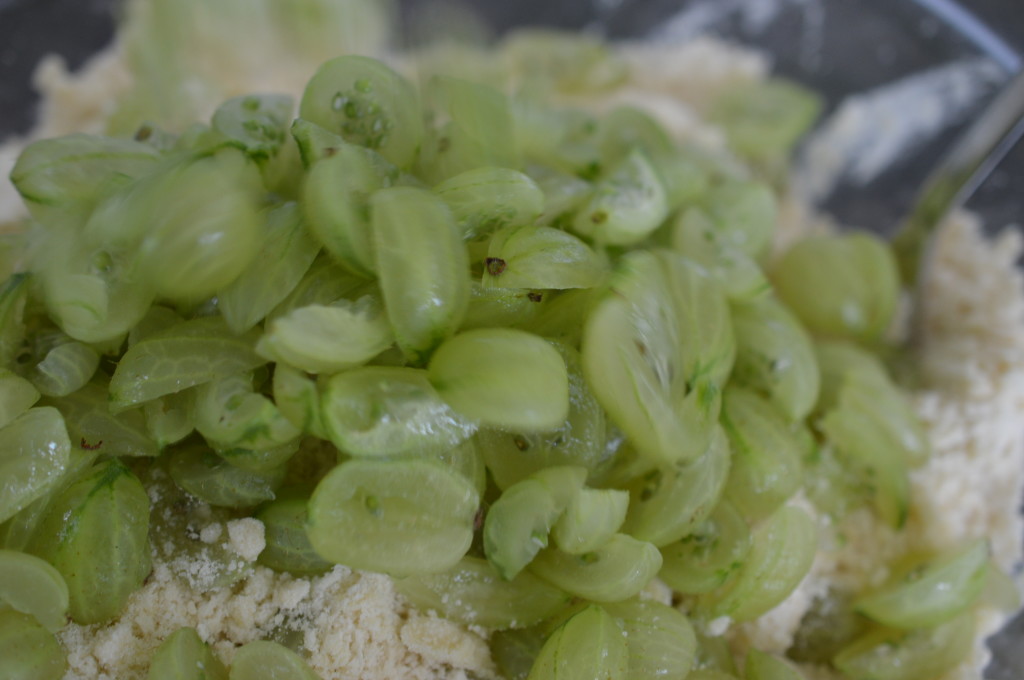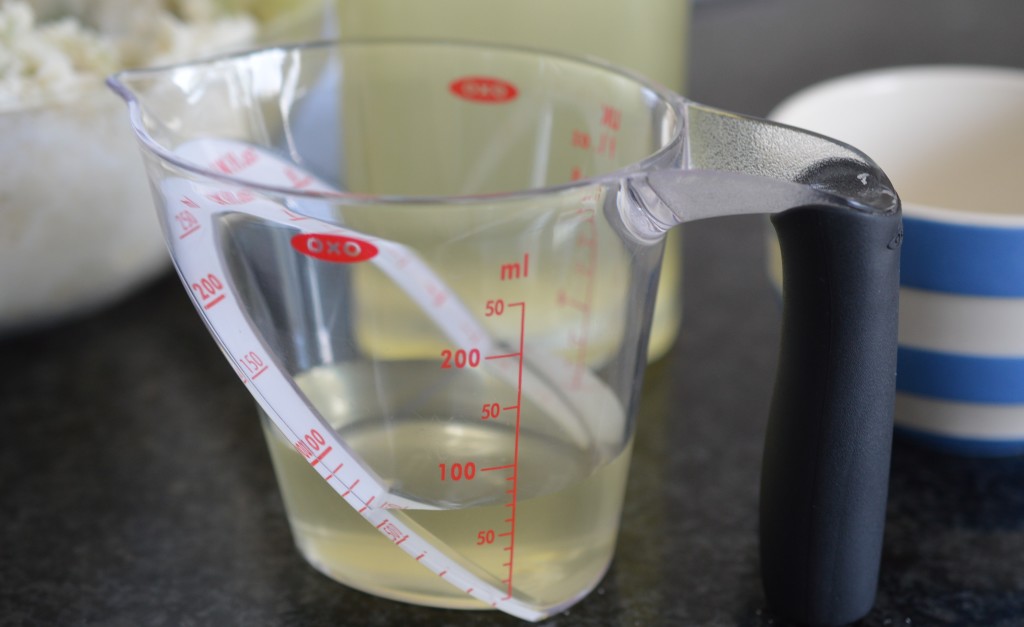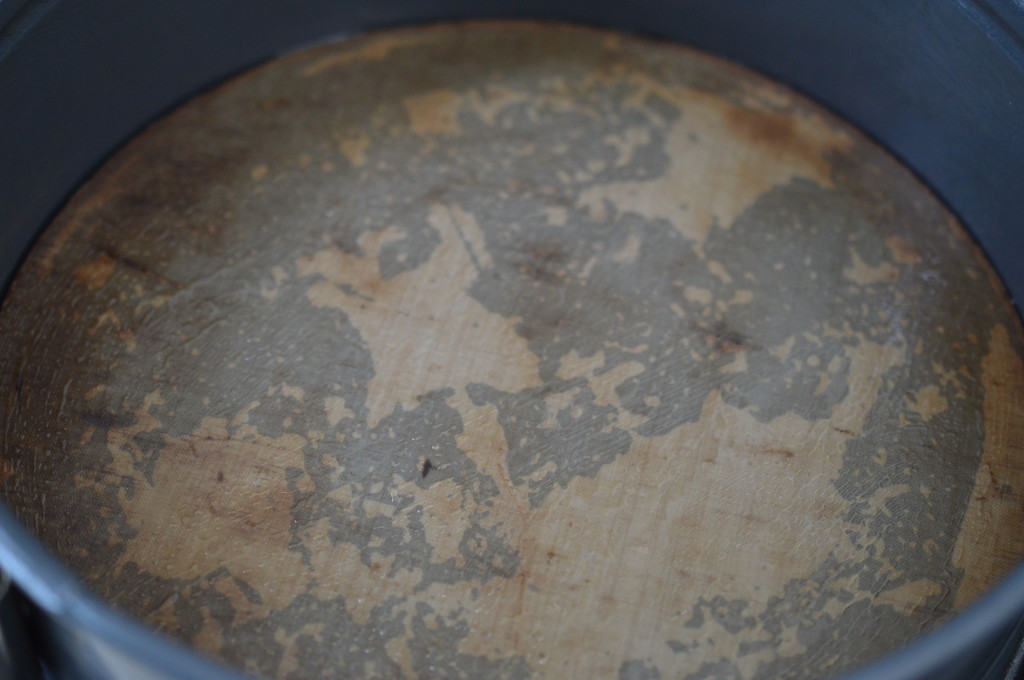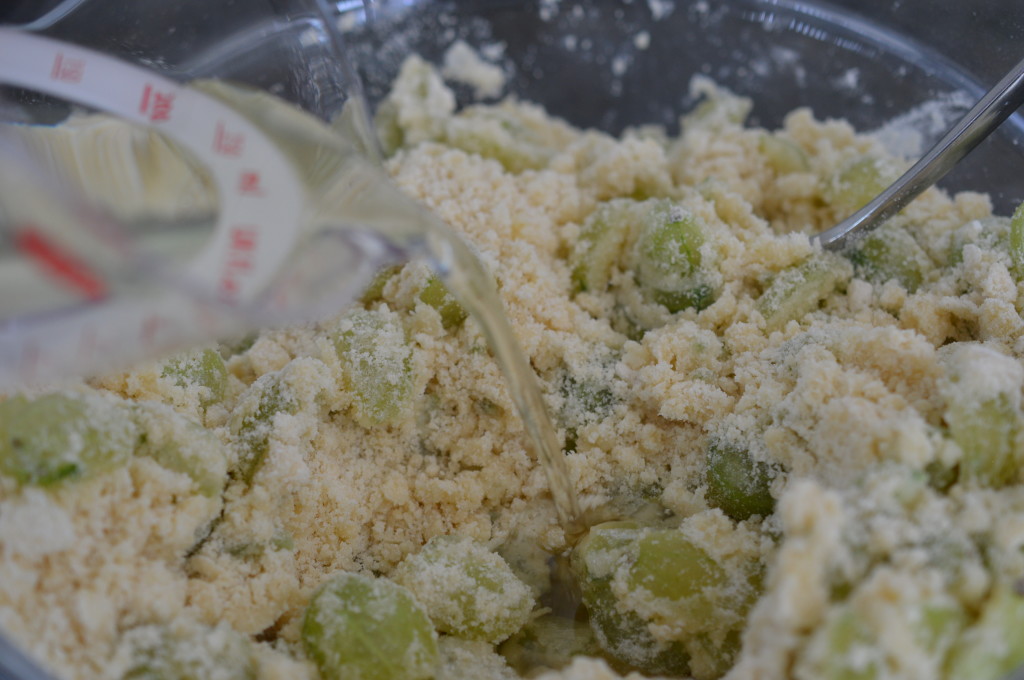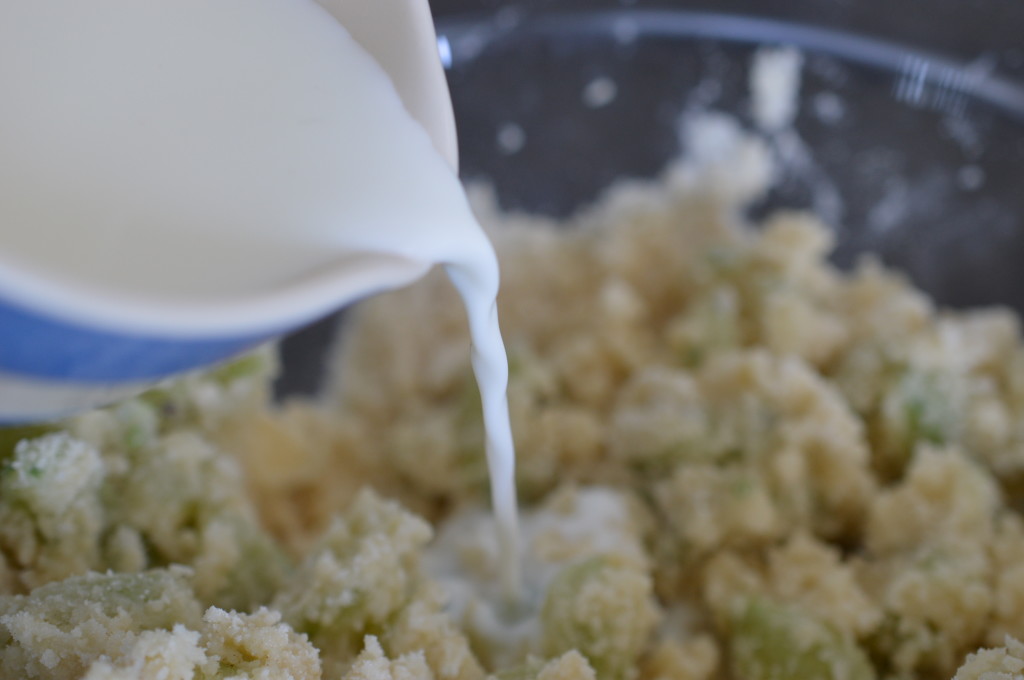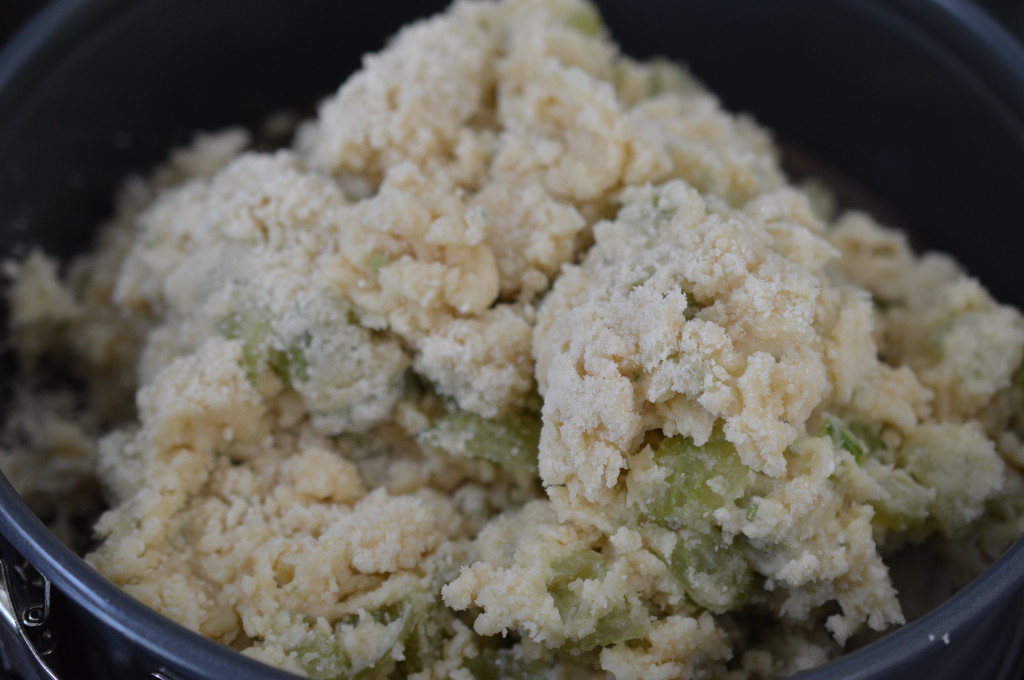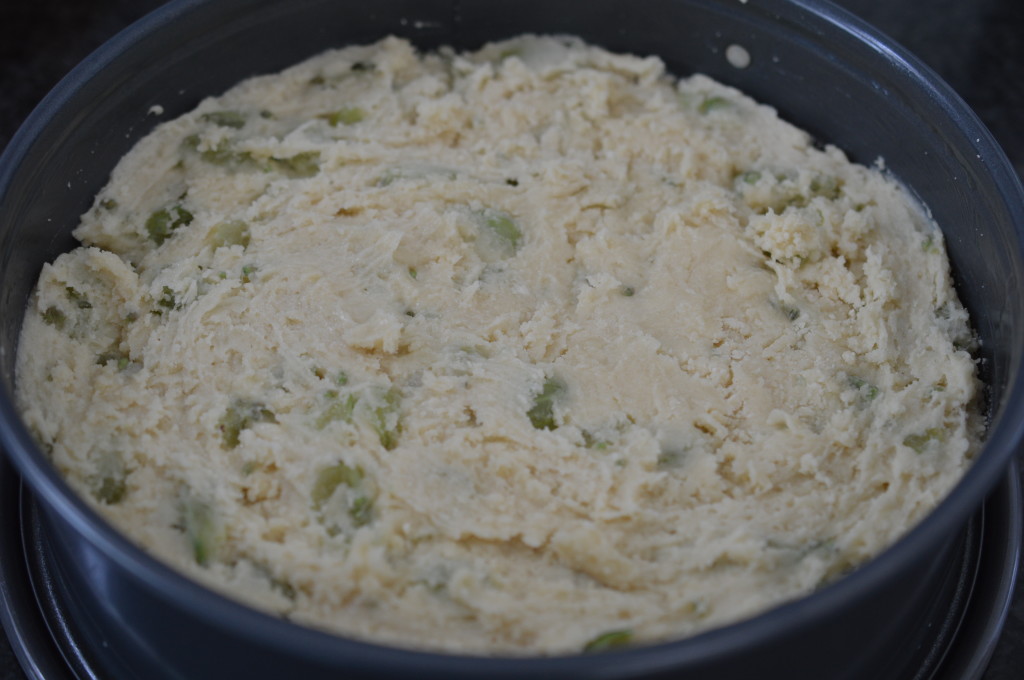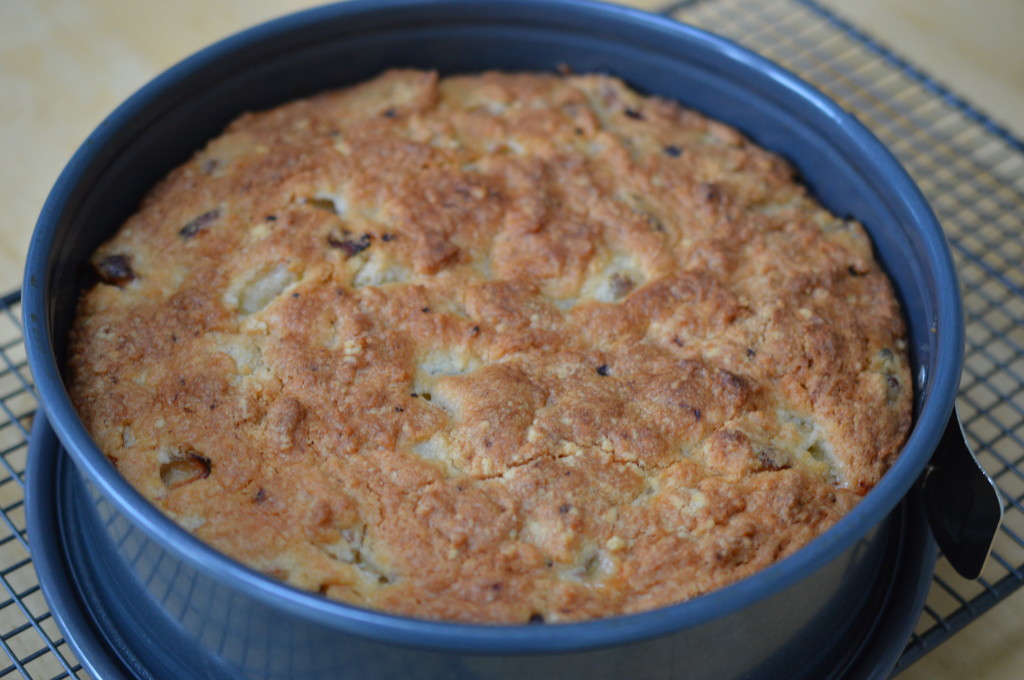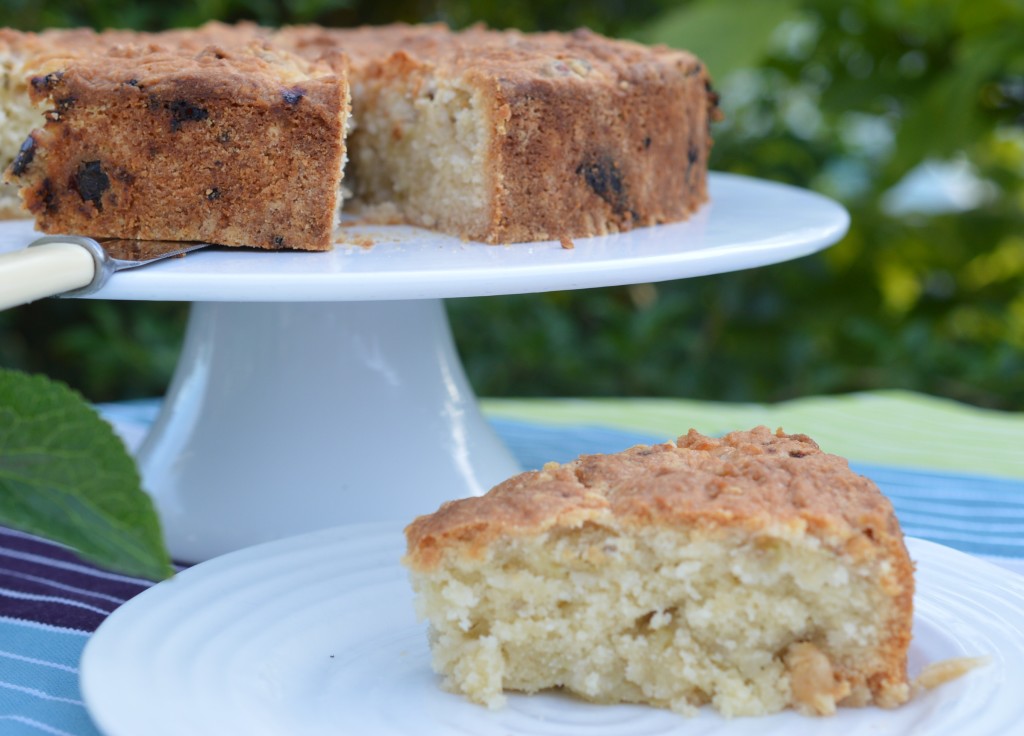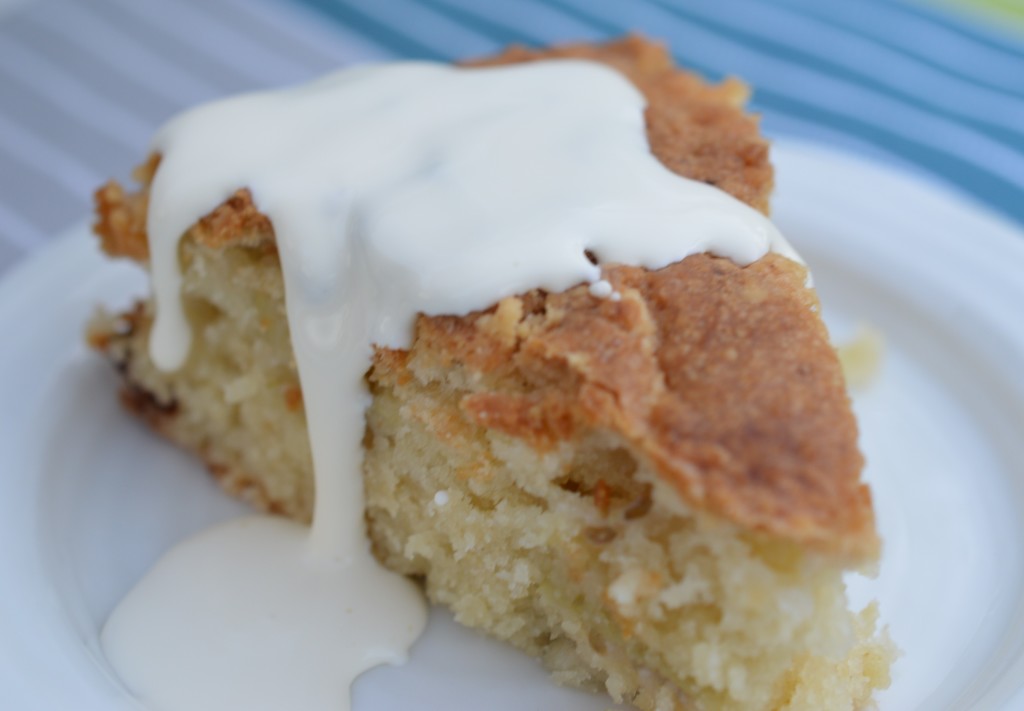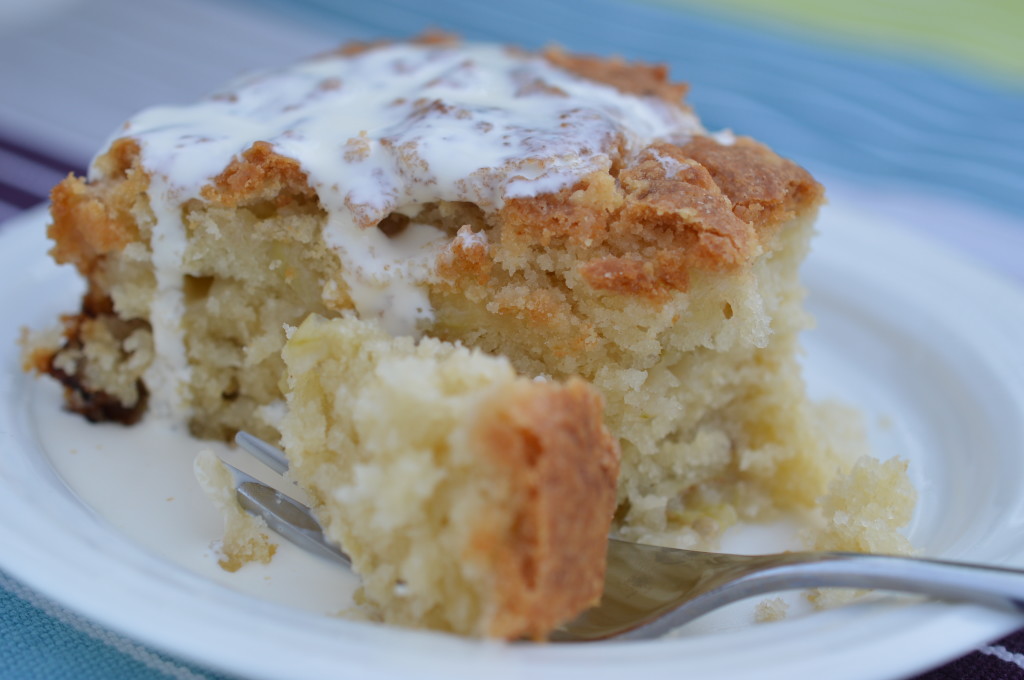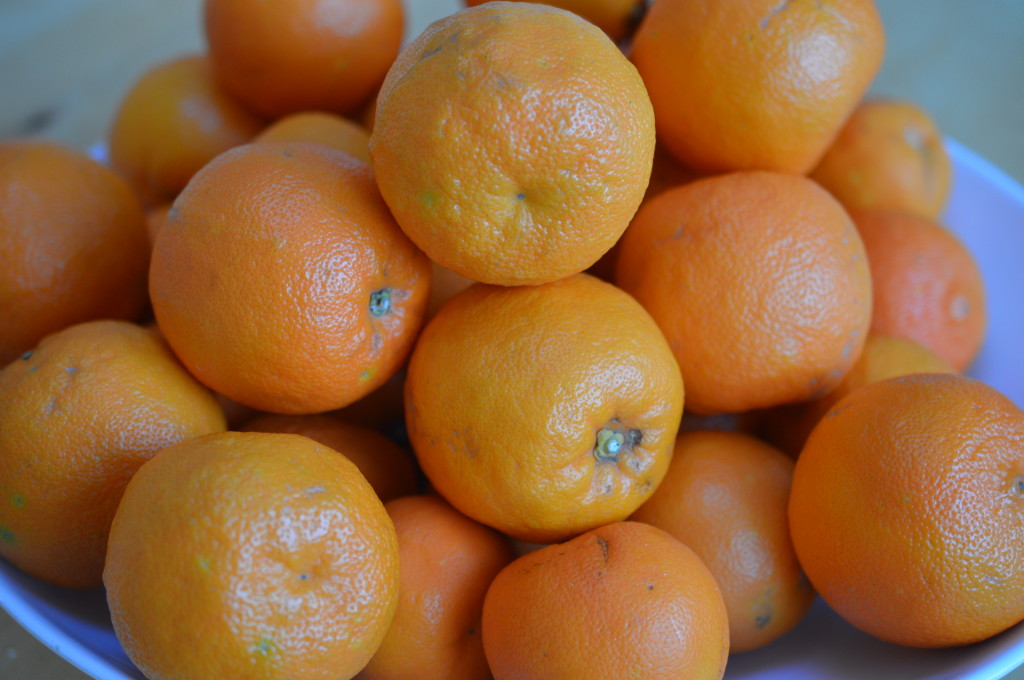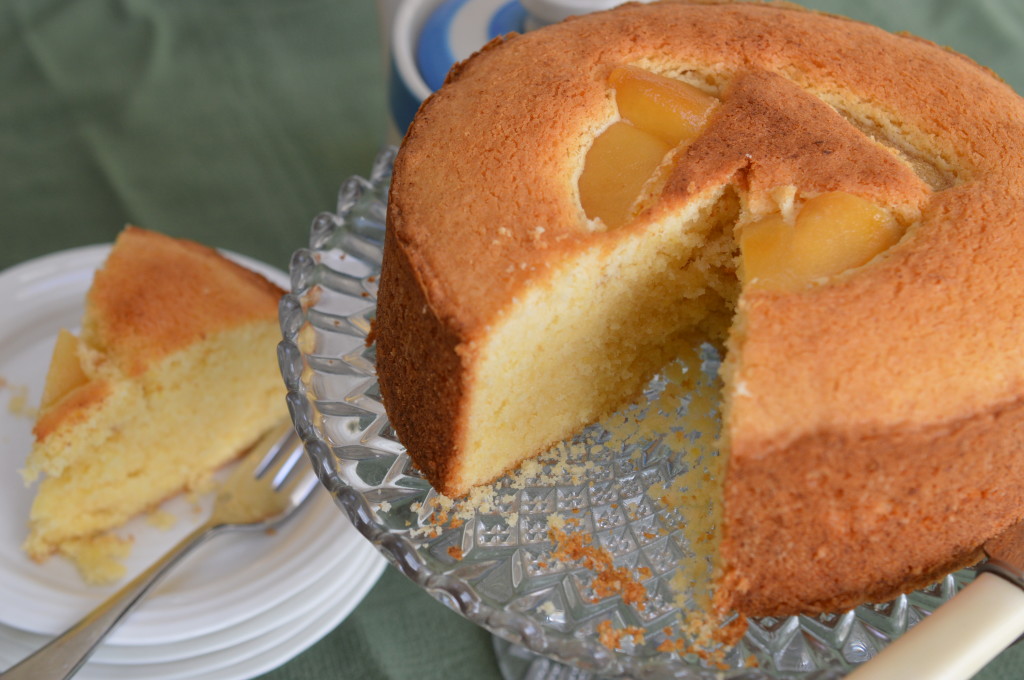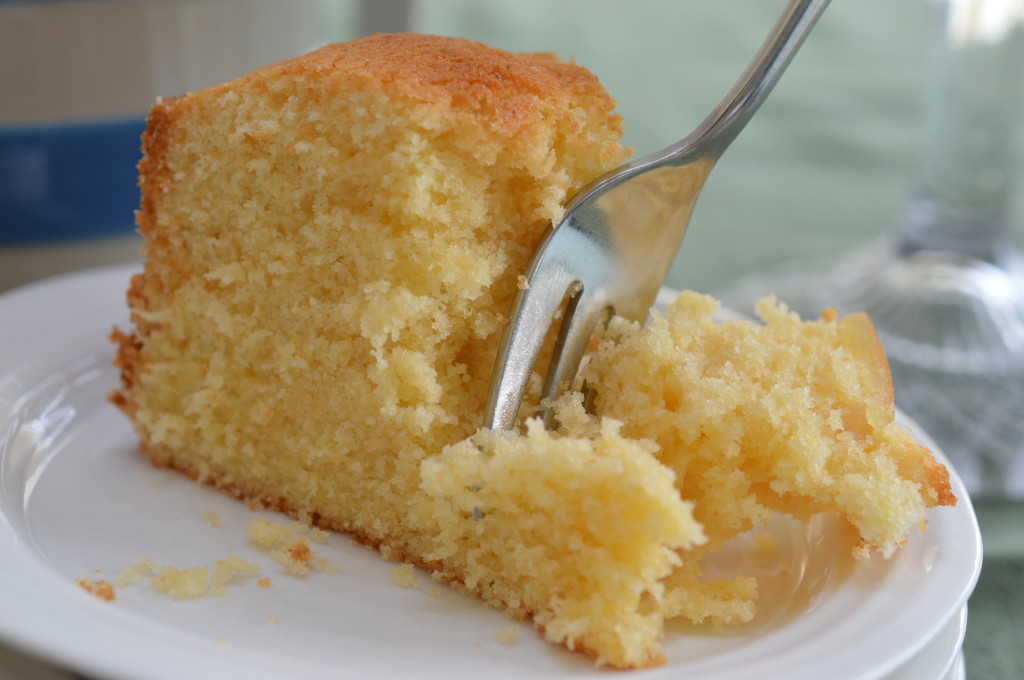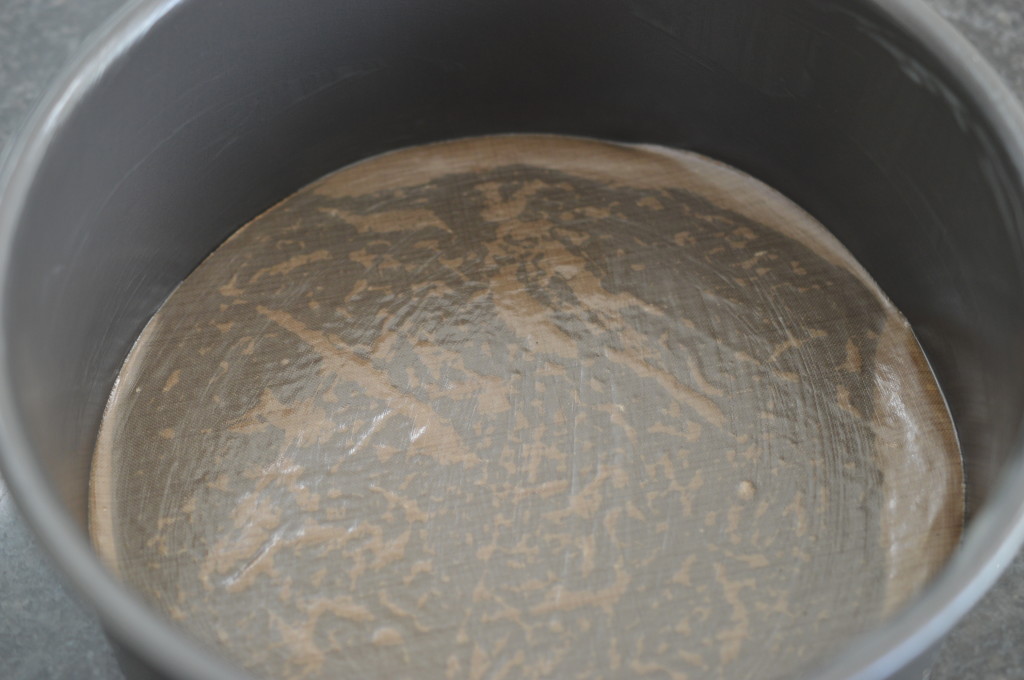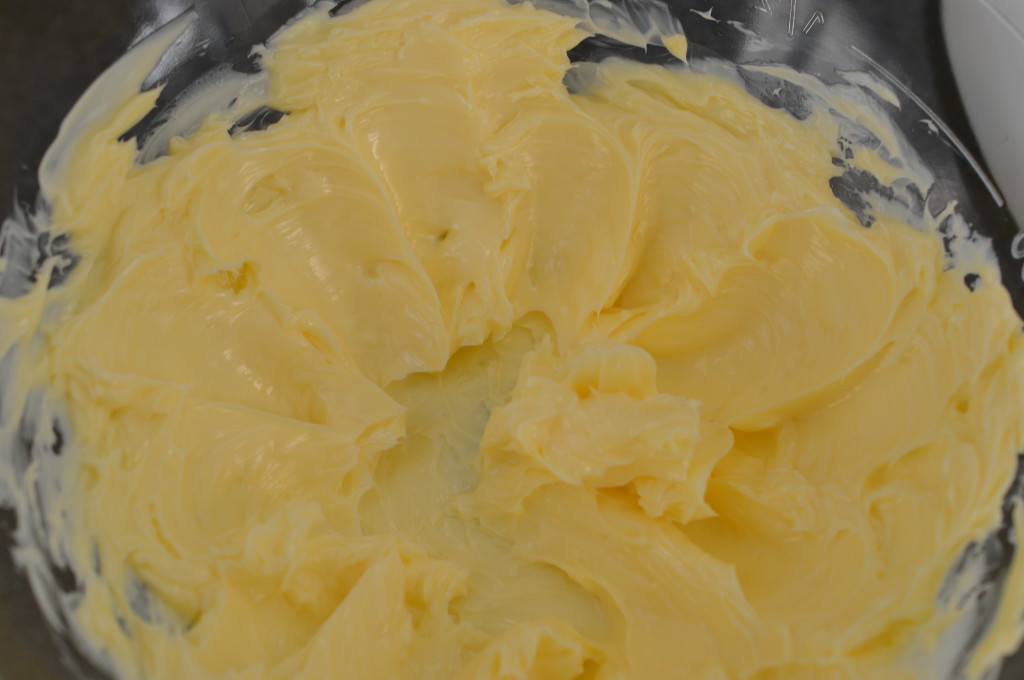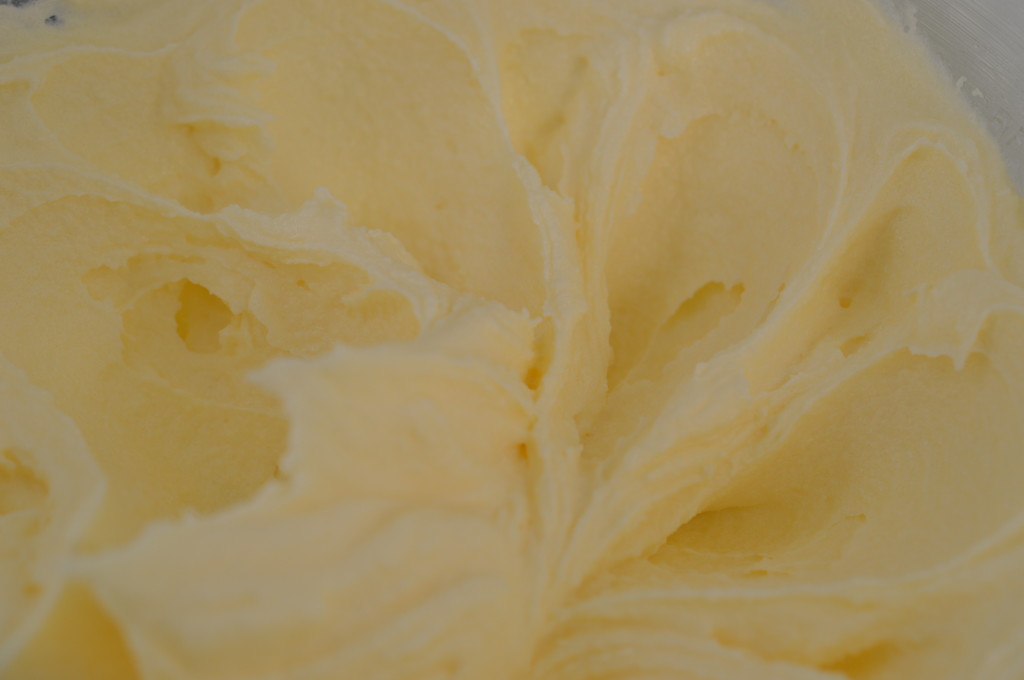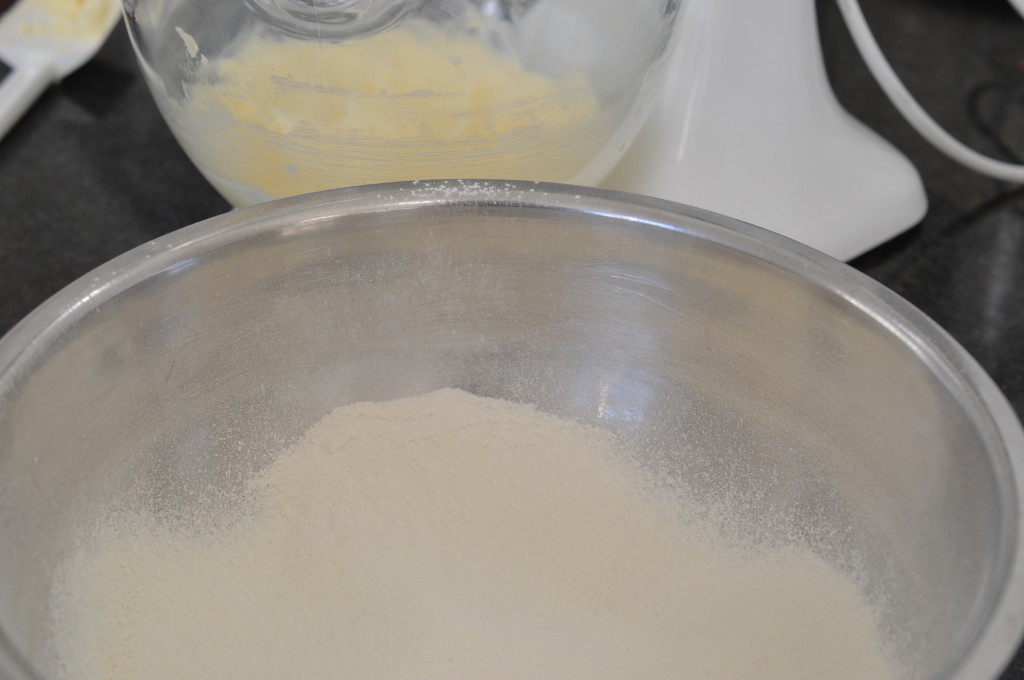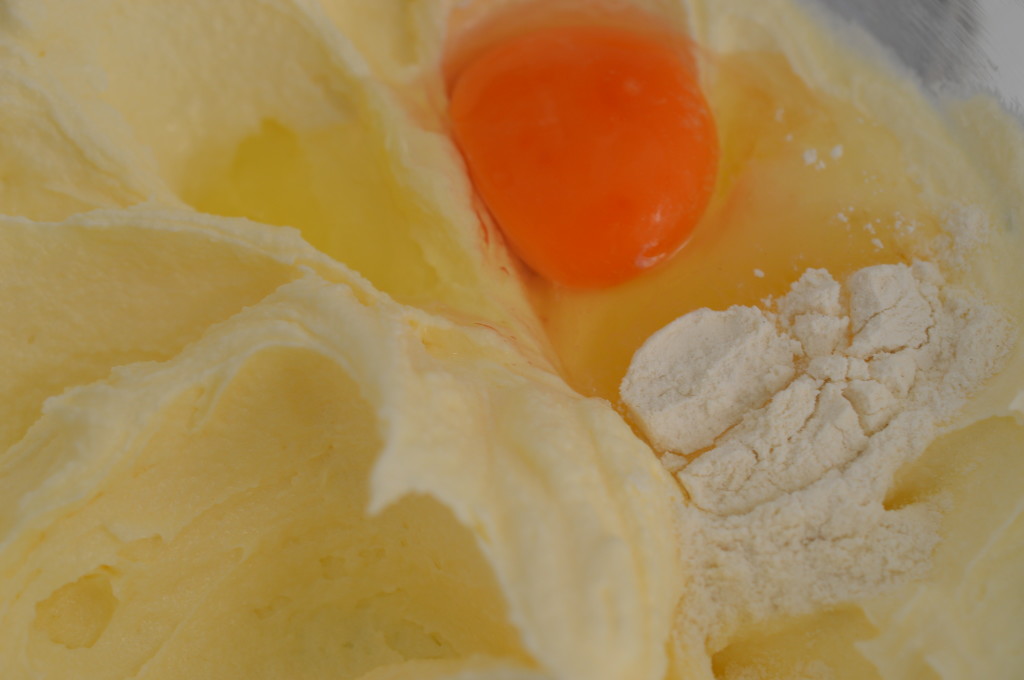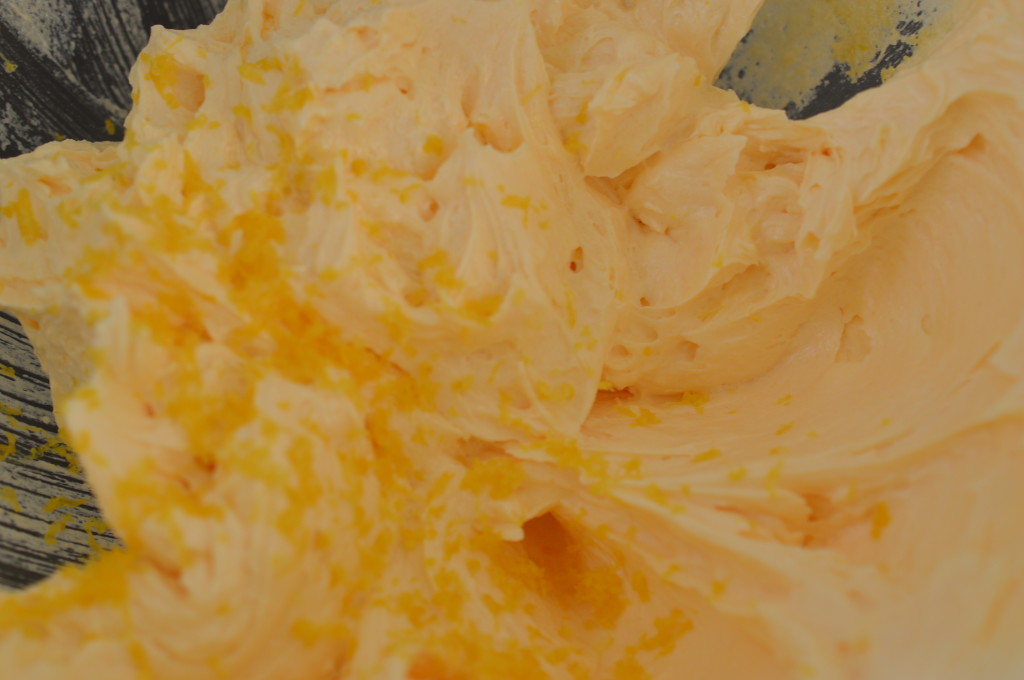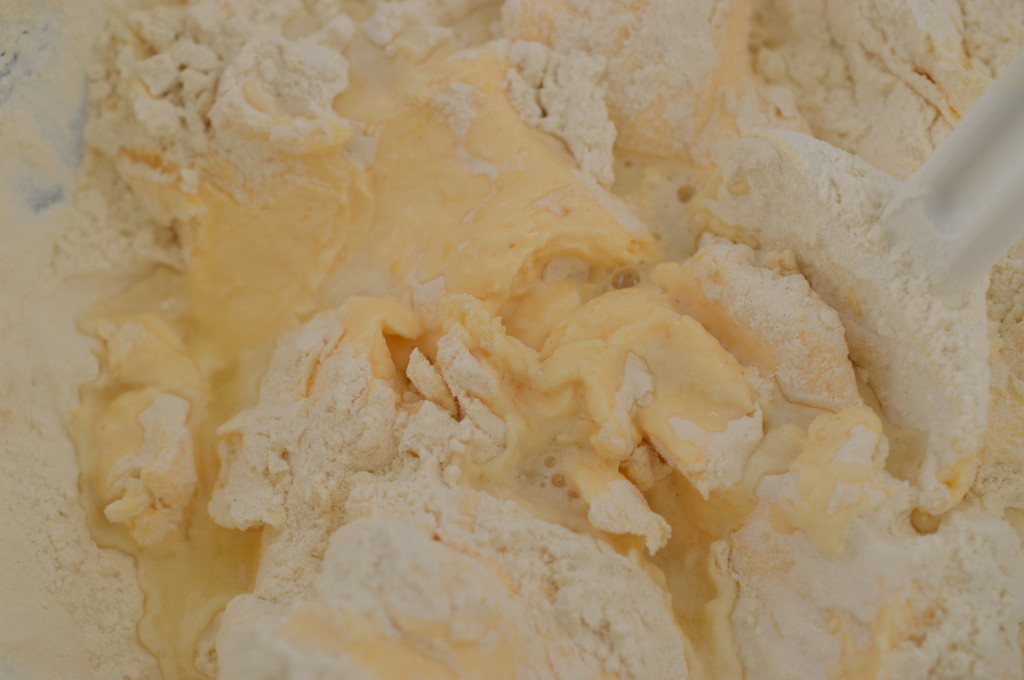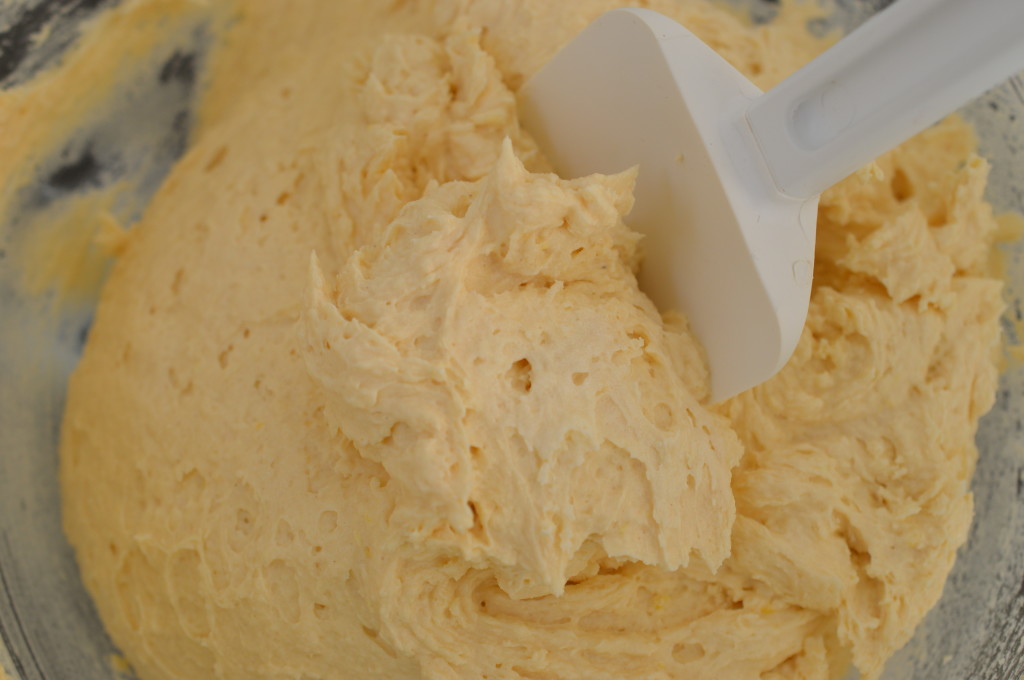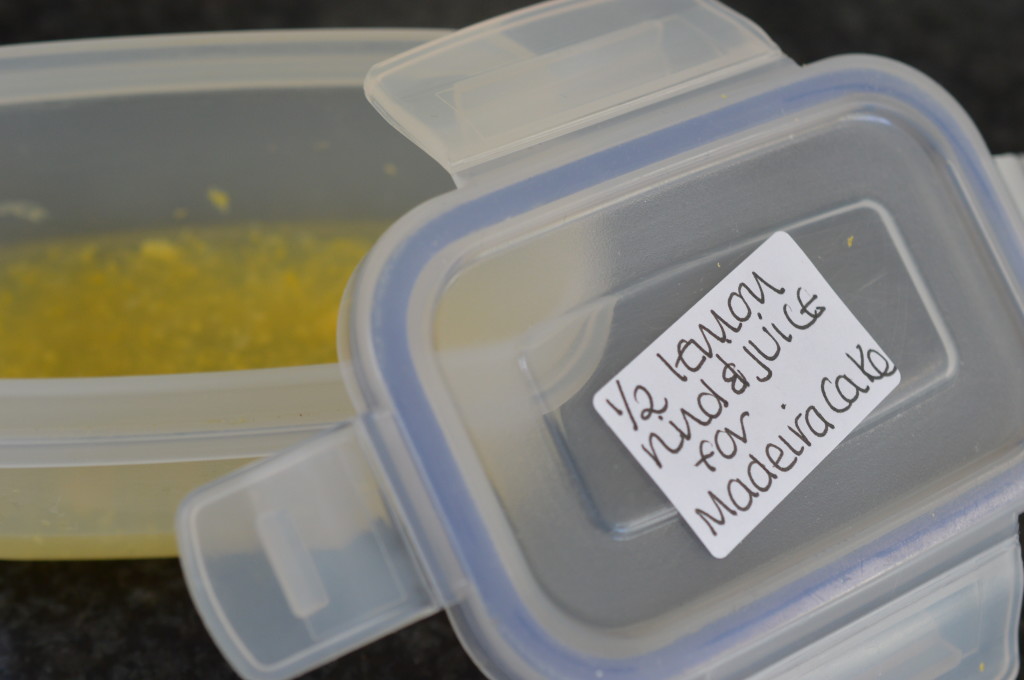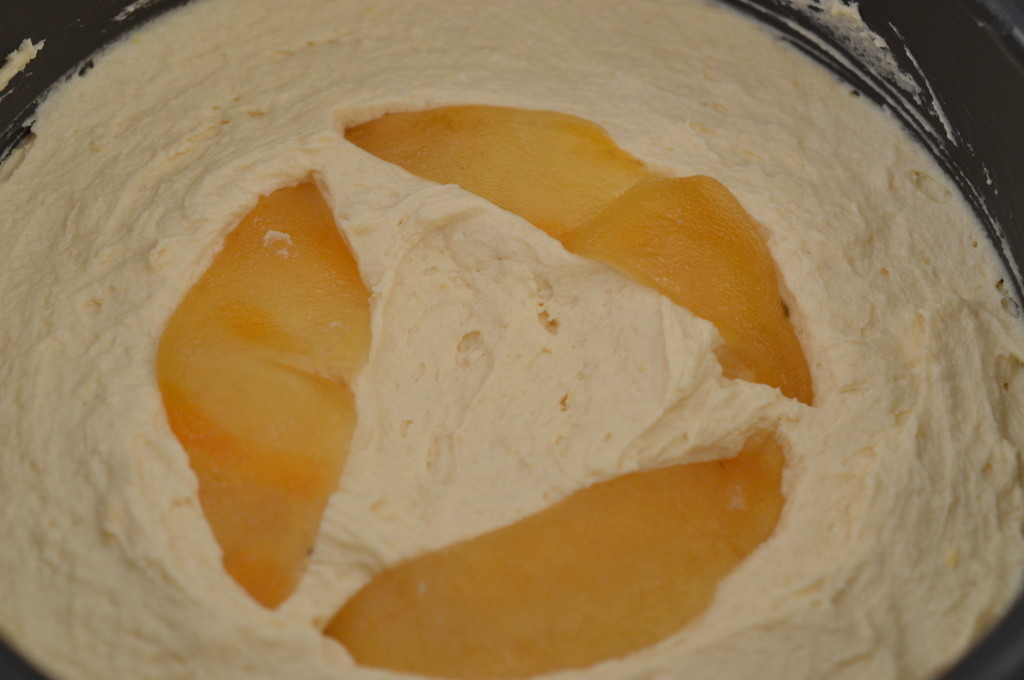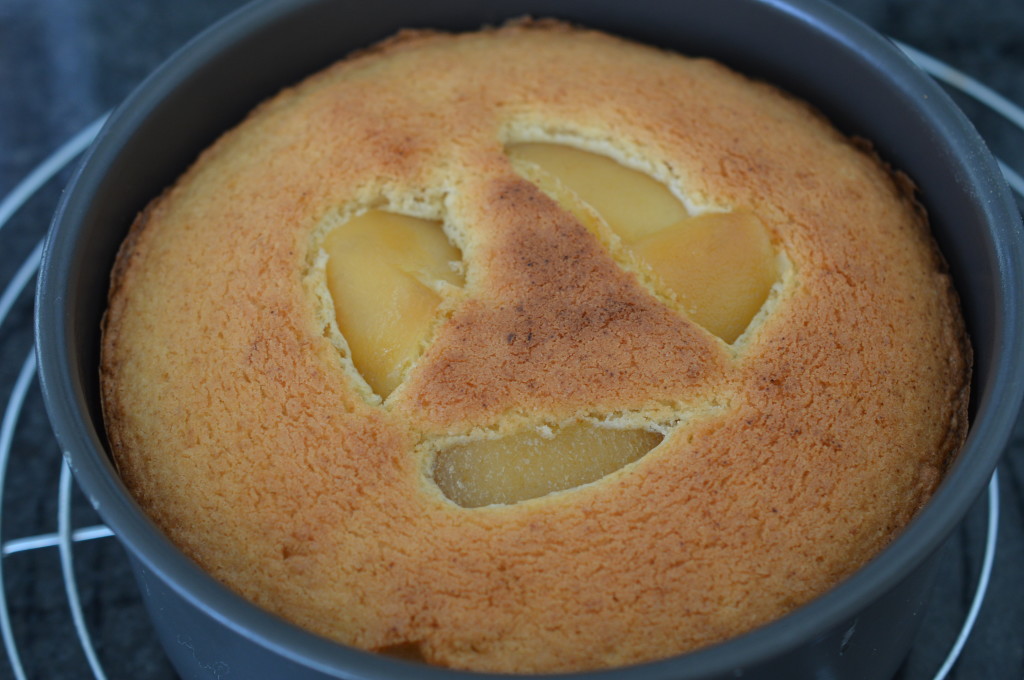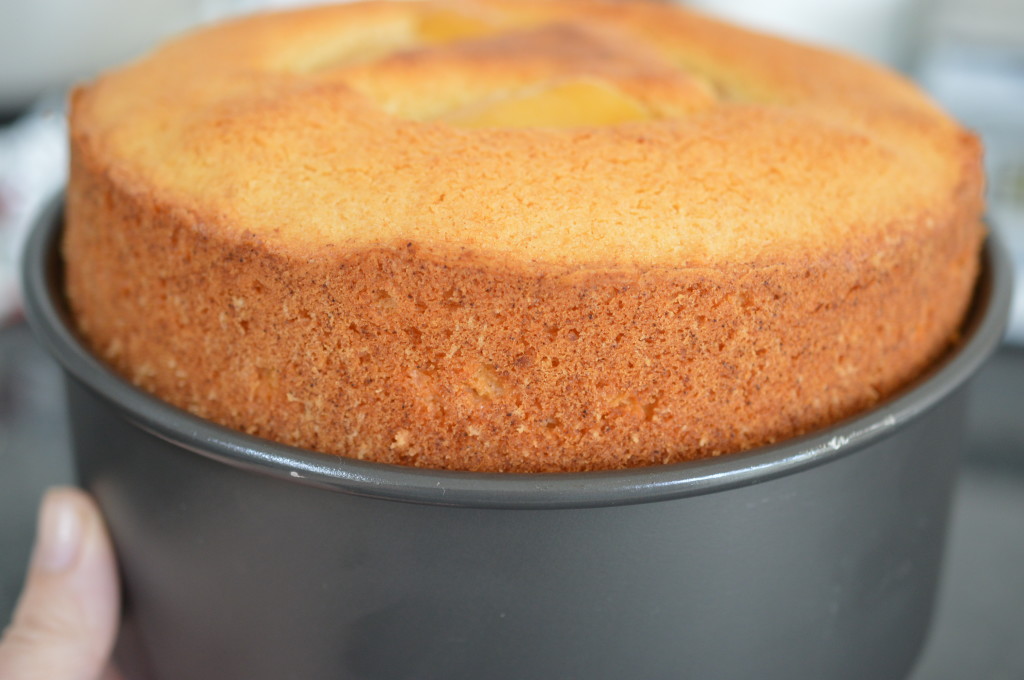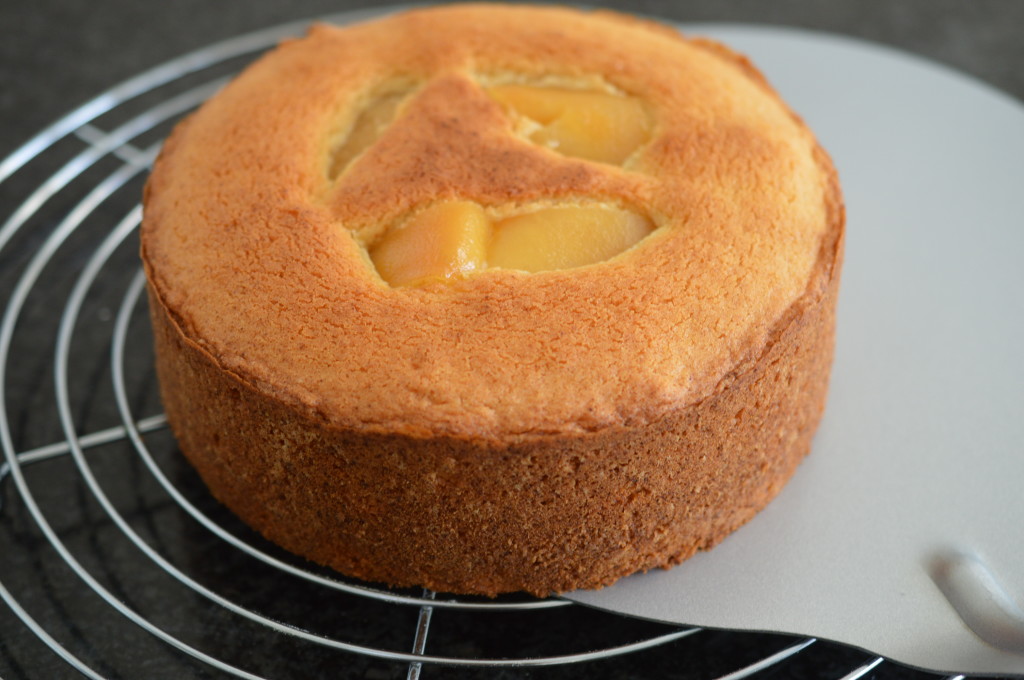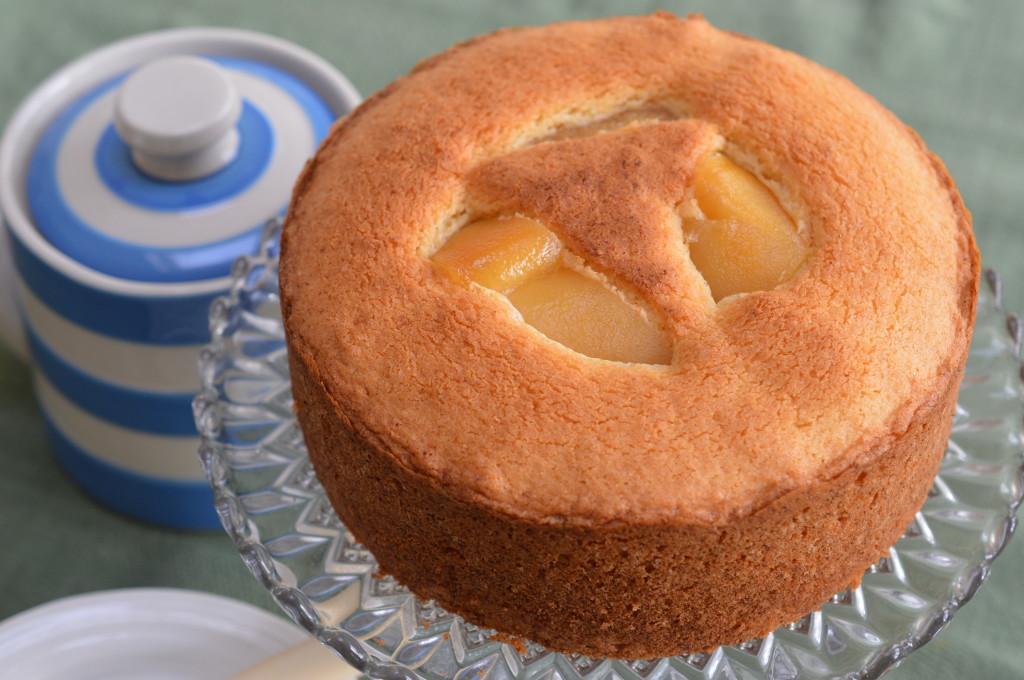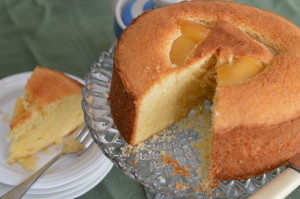Gooseberry and Elderflower Cake
I wasn’t fond of gooseberries as a child and I told everyone the reason for that was because they made me ‘blink’. I was right. They can be lip pursing-ly sour and even the sweetest need sugar. What’s more, they are spiteful to pick, with thorns like spears.
Gooseberry Fool was the only way I was prepared to eat them. Now, I’ve branched out but it’s still important to treat them with love – which is probably why they’re not so easy to find. If you don’t grow them yourself you’re more likely to find gooseberries at farm shops and farmers’ markets than at the supermarket.
(Please note the artistic positioning of gooseberries and elderflowers in this photo.)
The parent recipe of this cake features in my mum’s recipe collection as ‘Apple Cake’ and I suspect it will have entered my mum’s life via a ‘parish cookbook’; the kind that’s produced by fantastic home cooks in aid of their Grade I listed 12th bell towers and my mum would always buy when on holiday. Warm from the oven, it’s lovely with cream or custard and eaten as a pudding. Cold, it’s perfect picnic and packed lunch food.
Gooseberry and elderflower is an early summer switch away from apple.
It’s a wonderfully simple cake and easy to scale up or down. It’s the same weight of flour and fruit, in this case gooseberries. Half the weight of the flour in sugar and the same of butter. A little baking powder and milk to mix. That’s it.
No eggs – which is useful if you’re baking for someone who reacts to the protein in eggs.
14oz/380g plain flour, mixed with 2½ tsp baking powder.
7oz/190g butter ‘rubbed in’. Using just the tips of your fingers you lightly ‘rub in’ small cubes of butter.
If you aren’t as washing up phobic as I am you could blitz the flour, sugar and butter together in a food processor. Breadcrumbs is the usual way to describe the result you are hoping for but I think sandy rubble is closer to what I aim for in this kind of cake.
Stir through the sugar.
There is no escaping this bit. Topping and tailing. Pinch off the top and the tail with your fingers.
You are left with what looks like veiny grapes. In order to prevent the gooseberries sinking you need to cut them in half or quarters, depending on their size.
Stir the prepared gooseberries through the flour mixture.
Now for the elderflower cordial. If you haven’t made this, there are commercial versions available.
I melt butter to lightly grease the sides and bottom of my cake tin. In an ideal world (the kind where days are longer than twenty-four hours and university student children didn’t want their washing done) I would line the sides. Truthfully, I rarely do for a cake like this and I have pre-cut bake o’ glide to fit my tin collection.
Now, it’s the liquid. 75ml/2½ fl oz of undiluted elderflower cordial.
You’ll need a little milk. Go careful.
You want a dry mix rather than a more usual cake batter. The gooseberries will release lots of moisture.
Level out the top. To get a nice flat top, I use the back of a spoon. If you dunk it in water first, so much the better.
An 20cm round cake tin cooks in the Aga Baking Oven (rack on the floor) in 1 hour. Conventionally, it’s 180ºC/Gas Mark 4/350ºF.
If you want you can sprinkle the warm cake with a little caster sugar.
I forgot. Since we were eating this warm with pouring double cream I don’t know that it mattered.
Eat.
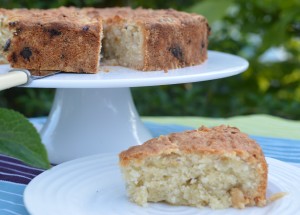 Gooseberry and Elderflower Cake
Gooseberry and Elderflower Cake
Makes 1 20cm/8″ round cake or a 20cm x 25cm tray bake.
- 380g/14oz plain flour
- 190g/7oz butter
- 190g/7oz caster sugar
- 2½ tsp baking powder
- 380g/14oz gooseberries, top and tailed, then halved or quartered depending on their size
- 75ml/2½fl oz elderflower cordial
- A drizzle of milk, as needed
Pre-heat the oven to 180ºC/Gas Mark 4/350ºF
Add the baking powder to the flour and whisk to combine.
Rub the cold cubed butter into the flour, then add the sugar and prepared gooseberries.
Drizzle over the elderflower cordial and use a knife to stir through. Add a drizzle of milk to make a dry mix, remembering the gooseberries will release lots of juice as the cake cooks.
Bake for 1 hour, turning halfway if necessary. (Aga: Baking Oven with the rack on the floor – 1 hour.)
Sprinkle with caster sugar, if desired. Allow to cool in the tin for 5-10 minutes before transferring to a wire cooling rack. Serve warm with cream or custard or cold.
Eat.
